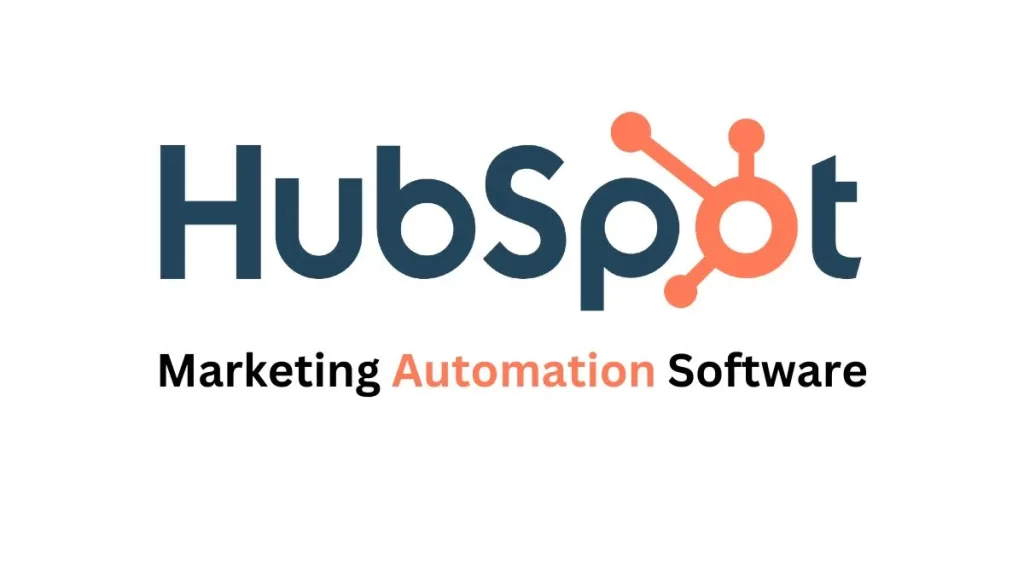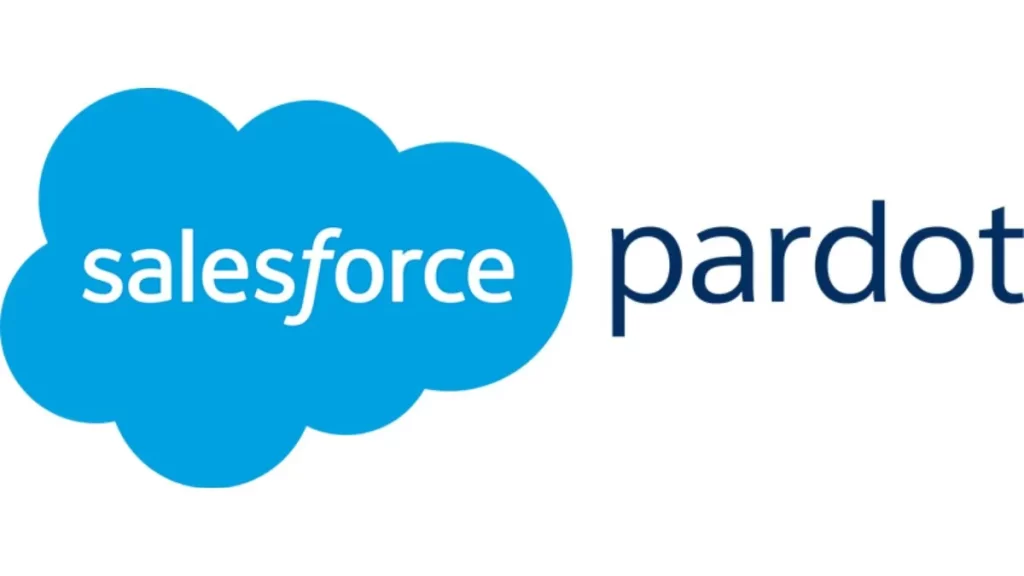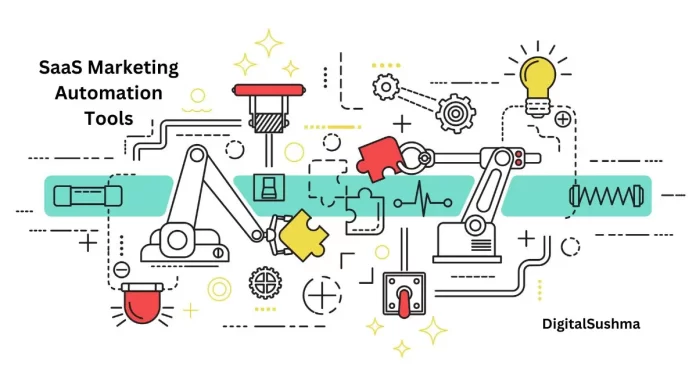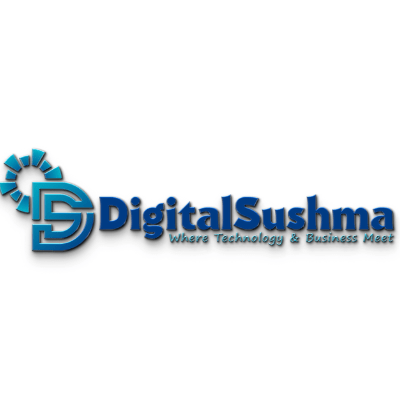Marketing automation is indispensable for SaaS brands looking to scale efficiently. Automating campaigns across channels including email, mobile, social ads and more increases qualified traffic, conversions and revenue growth. By nurturing subscribers with highly personalized messaging matched to their buyer journey stage, automation platforms supercharge sales pipelines.
This guide covers expert advice from SaaS marketing thought leaders on maximizing automation software as well as an evaluation of the top tools available. Follow these proven tips and recommendations to utilize automation to its fullest potential.
What is Marketing Automation?
Marketing automation refers to software solutions that streamline promotional tasks by using pre-programmed logic and workflows. This eliminates manual busywork, allowing marketers to focus on high level strategy.
Automation frees up resources while building centralized hubs to personalize cross-channel campaigns. Messages to segmented lists matched to behaviors and profile attributes boost engagement exponentially. Integrations with CRM then pass leads downstream to sales teams to accelerate deal closing.
The Data-Driven Imperative for SaaS Growth
For SaaS companies fighting for market share growth amidst fierce competition, marketing automation is mandatory. Buyers today expect ultra customized interactions while sales teams need quantity and quality leads to hit aggressive targets.
The top priority is collecting data across touchpoints to truly understand audience interests. Content consumption patterns inform opportunities to upsell existing accounts. Identifying high intent users signals promotions to move leads down funnel.
Automation checks all these boxes to catapult SaaS expansion by:
● Driving more inbound traffic from personalized multi-channel campaigns
● Converting higher ratios by nurturing leads based on behavior
● Reducing churn through automating renewals and expansion content
● Providing analytics to continuously optimize and improve performance
Now that the immense value of marketing automation is clear, let’s explore tips to maximize ROI.
Also Read: The Complete Guide to SaaS Product Marketing
The 9 Powerful Marketing Automation Tips for SaaS
Leverage the following expert advice for executing high-impact campaigns that accelerate awareness, engagement and customer growth.
1. Start with Lead Scoring to Focus Efforts
In B2B, not all prospects require the same level of attention due to varying buying stages and budgets. Lead scoring helps segment by assigning point values based on attributes like:
● Page views
● Email engagement
● Downloads
● Firmographic data
● Site traffic source
Algorithms classify contacts automatically based on scores for appropriate messaging. Sales teams also benefit by priortizing following up with closer leads first.
2. Set Up Pre- and Post-Sale Automation Workflows
Have a first-touch welcome series for inbound prospects from blogs, events and ads guiding them to free trials or demos. Post-sale, trigger renewal, expansion and referral sequences to existing customers. This sustains long-term higher lifetime value.
3. Create Email Workflows Targeting Conversion Events
Set up conditional sequences where subscribers see different follow-up paths based on actions. Offer free ebooks for early nurture then product demos for sales-ready prospects. This reduces overload and increases relevance.
4. Orchestrate Omni-Channel Campaigns
Integrate automation across email, mobile push notifications, direct mail and ads for unified messaging indifferent of source medium. This amplifies reach through recognition anywhere audiences consume content.
5. Tap Analytics for Optimization at Every Stage
Constantly refine targeting, content types, subject lines and send times using open/click rates. Monitor peak sales windows to align promotions accordingly. Tools like A/B testing allow comparison of delivery days or creatives.
6. Take an Omni-Channel Approach Across Devices
Given rising mobile usage, ensure automation versatility across web, smartphones, tablets and apps. This expands reach while enabling continuity wherever subscribers access messages.
7. Personalize Content with Dynamic Segmentation
Leverage data integration from your SaaS platform, surveys and behavioral patterns to classify users. This powers individualization with tailored product recommendations and promotions matched to needs.
8. Integrate Survey Data into Subscriber Profiles
Profile augmentation identifies pain points and feature wish lists to map content types. Quiz opt-ins on challenges solved or integrations needed so you can target accordingly.
9. Test Automation Extensively to Maximize Reach
A/B test various aspects like audience segments, delivery dates/times, email copy, subject lines, content types and sender details to determine optimal configurations for each campaign goal before rolling out fully.
Executing marketing automation following these tips will generate remarkable ROI through greater volumes of prospects at reduced acquisition costs. But choosing the right platform tailored to your needs accelerates seeing these benefits.
Also Read: A Developer’s Guide to Choosing the Best PaaS
Top 9 Marketing Automation Platforms for SaaS
With many vendors touting automation capabilities, filtering options by critical elements ensures sales impact. Below represents top platforms purpose-built to spur SaaS expansion ranked by core specialities.
1. HubSpot – Ideal for Easy Onboarding & Versatile Features

Known for its ease of use and all-in-one suite bundling, HubSpot empowers marketers to build sophisticated campaigns and workflows. Drag and drop template automation combined with integrated analytics and reporting accelerates results even for beginners.
For resource-strapped SaaS companies, HubSpot delivers an end-to-end toolkit to attract and convert leads without extensive training. Growing businesses can scale on the platform as their needs evolve.
Standout Features:
- Drag & Drop Workflow Builder: Dynamic visual editor makes it fast and easy to create multi-phase automations with branching conditional logic.
- Website & Landing Page Creator: Build responsive pages and forms to capture more contacts without coding expertise required.
- CRM & Sales Enablement: Manage deal data in one unified platform shared with sales reps to track prospect engagement.
- Robust Analytics Dashboard: Details campaign metrics, lead status trends, pipeline performance, and ROI reporting across customer journey.
- A/B Testing: Compare email content, calls to action, sender details and more to optimize campaign effectiveness.
- Meetings Scheduling: Integrated calendar booking seamlessly connects sales reps and prospects to accelerate deal velocity.
- Marketing Campaign Templates: Get started faster by customizing best practice templates already optimized for conversions.
The true value of HubSpot for understaffed SaaS teams is delivering powerful capabilities that typically require dedicated specialists bundled into one user-friendly growth platform. The complete visibility and integrations mean less tool-switching making it easier to execute high-impact campaigns in-house while scaling.
2. Salesforce Pardot – Seamless CRM Alignment

As a Salesforce native product, Pardot enables tight integration to leverage CRM data for enriched workflows and lead routing. Bidirectional syncing shares insights gathered from engagement tracking and lead scoring for better qualified hand-offs.
For SaaS using Salesforce to manage pipeline, Pardot automations scale personalized multi-channel campaigns while keeping everything connected to central records. Sales teams gain complete visibility into what messaging prospects receive through natively embedded tools.
Standout Features:
- Nurture Programs: Creates graded lead nurturing paths with escalating content that move contacts through funnel based on properties and behaviors.
- Dynamic Lists: Automatically updated smart groups based on criteria like engagement, profile attributes and scores for precise targeting.
- Lead Scoring: Customizable scoring algorithms assign values to actions then classify into categories so sales knows whom to prioritize.
- Engagement Analytics: CRM captures all email and gated offer views appending lead activity directly within contact profiles for immediate access by reps.
- Salesforce Integration: Complete embed within platform UI provides user familiarity. All contacts, attributes and actions automatically synchronize across both systems.
For SaaS businesses fully bought into Salesforce ecosystem, Pardot seamlessly activates advanced automation with full visibility into subscriber engagement courtesy tight alignment to CRM data. Marketers can instantly access prospect interaction history to craft more relevant messaging and sales teams know who’s sales qualified. This native unified approach makes Pardot an easy choice to set up and scale.
3. Marketo – Powerful Predictive Modeling and Analytics

Marketo stands out with its advanced modeling and machine learning abilities for hyper-targeted multi-channel campaigns. Granular segmentation combined with predictive intelligence informs the best content types and messaging timing to open new opportunities.
For data-driven SaaS, Marketo provides customer analysis to identify who is ready to buy now versus high-potential individuals that need nurturing through tailored follow-up. Intelligent features accelerate sales cycles and expansion revenue.
Standout Features:
- Predictive Content Analytics: Determines optimal channels, send times, content type and frequency for individuals using historical data and machine learning.
- Advanced Segmentation: Blends known attributes with behavioral and profile data to create dynamic groups for 1:1 messaging aligned to customer lifecycle.
- AI-Powered Recommendations: Surfaces relevant content recommendations in real-time based on evolving user interests to keep them engaged.
- Custom Modeling: Create specialized lead scoring algorithms, predictive models and complex if/then workflows tailored to your unique business processes.
- Multi-Touch Attribution: Analyzes influence across web, mobile, social and staff interactions to allocate revenue and pipeline properly.
- Machine Learning Optimization: Self-adjusts messaging over time based on engagement signals to maximize campaign performance automatically.
For growth-focused SaaS brands, Marketo provides a powerhouse automation solution to realize 1:1 engagement powered by predictive analytics and AI-based recommendations that model ideal buyer journeys. The ability to design custom datasets and scoring models ensures completely personalized messaging at scale.
4. Ontraport – Affordable Automation Integrated with Gmail

Ontraport consolidates essential marketing automation, landing pages, and analytics into an integrated suite priced for early stage software companies. The platform streamlines launching campaigns while built-in Gmail syncing centralizes subscriber interactions.
For undersourced SaaS startups, Ontraport accelerates execution by removing the need to toggle between tools. Unified data flows minimizediscord between systems enabling more strategic workflow focus. Packages scale from basic to advanced levels based on evolving complexity.
Standout Features:
- Value-Focused Feature Set: Provides core lead capture, email marketing, and campaign analysis without overwhelming excess capabilities that inflate pricing.
- Gmail Integration: Unique two-way sync automatically logs email conversation activity on profiles for instant access within the platform without manual exporting or uploading.
- Landing Page Builder: Quickly builds customized pages and forms to attract and collect visitor information to drive conversions and feed subscriber lists.
- Campaign ROI Tracking: Connects automation expenses to pipeline influenced for optimizing budget allocations towards best performing initiatives for maximum scale.
- Business Analytics Dashboard: Consolidates engagement rates, deal status trends, pipeline velocity reporting, and marketing KPIs across initiatives to highlight what’s working.
For startups running lean, Ontraport delivers an automation solution purpose-built for the budget-conscious that minimizes tool-switching. The ability to capture prospect interactions happening externally in email and across landing pages into bundled affordable platform keeps SaaS focused on high-value strategy.
5. ActiveCampaign – 500+ Integrations & Strong Automations

ActiveCampaign delivers reliable automations tightly integrated with surrounding martech stacks through 500+ native app connectors. Beyond email, capabilities like SMS, offline messaging and advanced segmentation make campaigns more effective.
For SaaS brands relying on ecosystems of optimized tools, ActiveCampaign centralizes orchestration with the flexibility to toggle on/off integrated solutions already embedded in workflows. This consolidates data and coordination minimizing disruption.
Standout Features:
- 500+ App Integrations: Native connectors enable connecting to marketing, sales and CRM systems with no coding including email, live chat, Ecommerce and webinar tools.
- SMS and Offline Marketing: Expand beyond digital into mobile texting and direct mail automations for more top-of-mind consumer visibility.
- Advanced Segmentation: Combine multiple data types like CRM details, email metrics, tags and custom fields to create dynamic subscriber groups for targeted campaigns.
- Custom Field Layering: Tag contacts with unlimited labels and attributes to inform segmentation beyond basic demographic filters.
- Pre-Built Workflow Templates: Quickly launch common sequences for onboarding, lead nurturing, event follow-up, and customer re-engagement with best practice automation.
- Activity Timeline Tracking: Centralized interface detailing every subscriber touchpoint and engagement across channels including email opens, form submits, link clicks and page views.
With ActiveCampaign, SaaS businesses gain a control center coordinating data-informed messaging across technologies within existing martech stacks. This creates a powerful picture of customer engagement to deploy targeted cross-channel automations that move leads towards conversion at each opportunity.
6. Adobe Campaign- Robust Profiling & AI Optimization

Part of Adobe Experience Cloud, Adobe Campaign delivers enterprise-grade capabilities for orchestrating personalized messaging. Advanced AI and machine learning intelligence helps build comprehensive audience segmentation driving targeted cross-channel campaigns.
For global SaaS brands managing high volumes of engagement data, Campaign provides customer recognition and segmentation to tailor experiences powered by Adobe Sensei algorithms. Automated individualization shortens sales cycles while optimizing spend efficiency by matching content to buyer lifecycle stage.
Standout Features:
- AI-Enhanced Personalization: Applied machine learning analyzes behaviors onsite and across devices to serve up tailored content and recommendations in emails, mobile apps and ads.
- Predictive Content Analytics: Analyzes historical data to forecast optimal send times, engagement rates on assets types and project buyer conversions to optimize campaigns.
- Customer Journey Orchestration: Maps multi-channel subscriber pathways to develop profiles and assign messaging for users by business roles and digital footprints.
- Flexible Segmentation: Blends audience data like CRM attributes, engagement metrics and custom traits for dynamic grouping into meaningful segments for well-targeted campaigns.
- Agile Content Management: Centralized CMS to dynamically assemble modular content blocks based on profile factors like geolocation and interests for consistent relevance across touchpoints.
For SaaS enterprises, Adobe Campaign delivers powerful automation with cutting-edge personalization enabled by sensei AI to hyper-segment audiences and predict exactly what content converts best per user. The ability to scale orchestration and analyze performance via robust analytics makes it an industry leader option.
7. Zapier – Connect Marketing Apps for Powerful Workflows

Zapier is unique among marketing automation tools in that it focuses almost exclusively on connecting various software apps and services to create tailored workflows. Rather than a traditional all-in-one suite, Zapier excels and integrating solutions you already use.
For SaaS companies, this flexibility enables tying together your CRM, email marketing, help desk, analytics, social media management and other critical systems to move data and trigger automations between tools.
The benefit is that you can build very customized flows mapping to existing business processes without migrating platforms. Zapier’s pre-built integrations accelerate this connectivity.
Standout Features:
- 2,000+ App Integrations: Zapier’s bread and butter is its library of multi-platform integrations from leading MarTech and SaaS providers. This powers automating ANY tool combination.
- Workflows Based on Triggers: Create sequences based on triggers from one app causing actions in another. A form submit adding a CRM lead prompts an onboarding email.
- Conditional Logic Support: Build if/then style directional logic, like ONLY sending follow-ups if no response after X days to avoid overmessaging.
- Monitoring & Error Handling: Robust monitoring provides visibility into automation performance. Automatic retry attempts and error handling prevent failed executions derailing workflows.
- Composable Actions: Combine multiple step actions across tools into a single Zap encapsulating complex orchestration simply. This supports intricate sequencing smoothly.
While Zapier specializes in app connectivity versus end-to-end automation, its flexibility enabling integrating surrounding martech stacks makes it a secret weapon for SaaS personalization. Composing Zaps tailored to in-house processes at affordable subscription tiers positions the platform as a worthy investment for maximizing capabilities under already embedded solutions.
8. Zoho Campaigns – High Deliverability Through IP Warming

Zoho Campaigns makes professional-grade automation accessible for SMBs through lead management essentials and email marketing focused around optimizing inbox placement.
For SaaS startups prioritizing deliverability, Zoho Campaigns safeguards sender reputation with proprietary functionality like IP address warming to protect future growth. Timeline-based triggers scale sequences while integrations extend reach.
Standout Features:
- IP Warm Up: Gradually ramps up batch sends across newly onboarded IP addresses to maintain strong sender metrics minimizing blocking.
- Timeline Event Triggers: Builds sequential automations based on consecutive delays, dates and timestamps to set precise nurture timing.
- Email Integration: Connects native email platform DeliverabilityIQ for executing behavioral-based broadcasts through a reliable commercial-grade architecture.
- Workflow Builder: Crafts customizable rule-based workflows with multiple branches using drag and drop construction for straightforward automation mapping.
- Lead Capture Forms: Embeds data collection forms on landing pages and web ads to capture visitor information for triggering targeted sequences.
For startups seeking automation with training wheels, Zoho Campaigns provides fundamental capabilities for list growth and lead nurturing while safeguarding deliverability – protecting the foundation for expansion upon which additional solutions can be stacked.
9. Keap – Conversion Oriented for Service Businesses

Formerly Infusionsoft, Keap aims its automation directly at spurring conversions for appointment-driven service companies. Built-in scheduling, invoices and CRM empower small business owners to convert calls into paying customers.
For solo SaaS consultants and agencies, Keap removes administrative headaches through automation tailored around securing new business and maintaining relationships. Packaged suites accelerate implementation while premium training ensures adoption success.
Standout Features:
- Online Booking & Payments: Client self-service portals to automatically schedule consultations or sessions while collecting prepaid retainers integrated with calendar systems.
- Automated Appointment Reminders: Confirm upcoming meetings via SMS, email or voice calls with customizable reminder sequences including requested prep materials.
- Contact Management: Centralized access to client and prospect profiles, interactions, deal status and tasks to capture CRM essentials within automated workflows.
- Surveys & Assessments: Create questionnaires to segment prospects while identifying needs for tailored service packages and recommendations into subscriber records.
- Promotional Series: Set up post-appointment nurture tracks with value-adds like tip sheets, follow-on content and special offer coupons to encourage repeat business.
For solopreneurs selling high-touch services, Keap provides the right automation mix to facilitate more client engagements while systematizing back-end operations. Packages catering to service SaaS vertical needs makes setup simple allowing faster focus back on revenue growth activities.
This cross-section of platforms showcases versatility in strengths catering from startup budgets to enterprise-grade functionality needed for customization.
Let’s continue exploring critical fundamentals for activating automation effectively.
Also Read: A Comprehensive Guide to PaaS, SaaS, IaaS, and CaaS Cloud Computing
Marketing Automation Activation Guide
Beyond software selection, architecting launches for maximum effect requires additional planning for long-lasting gains. Follow this framework for executing high-impact automations.
1. Define Campaign Strategy Aligned to Business Goals
What specifically do you want automation to achieve? Outline KPIs like new trials generated, subscriber growth, sales pipeline velocity or overall customer expansion rates. Tracking macro conversion metrics maintains focus on broader objectives.
2. Structure Initial Campaign Architecture
Map preliminary content flows across channels that attract prospects then nurture them towards conversions. Plot multi-phase journeys with messaging matched to individual milestones from discovery to discounts to demos then renewal.
3. Integrate Platforms for Centralized Data
Connect marketing automation to your SaaS platform, web analytics, email and additional touchpoints via APIs to construct unified customer records from all activity. This powers personalization with better context while directing outreach.
4. Implement Site Tracking for Data Capture
Installing snippets of code on websites enables collecting visitor page browsing behavior to inform segmentation and lead scoring. Online actions can trigger enrolment in campaigns automatically as well.
5. Import Existing Contacts & Set Lead Scoring Rules
Upload current subscribers segmented by customer lifecycle stage to migrate into automated programs suited for their progress level. Configure scoring models to categorize new sign-ups based on profile data.
6. Build Initial Multi-Channel Campaign Workflows
Set up intro email series highlighting product benefits sent over two weeks then prompt for content offers or consultation bookings thereafter. Integrate cross-channel messaging across web pop-ups, notifications and ads.
7. Produce Relevant Content Assets as Fuel
Develop ebooks, tip sheets, video demos and expanded tutorials that map to subscriber needs at each level for campaign content. Repurpose webinars and documentation into snippets to multiply value.
8. Establish Reporting Dashboards & Analytics
Building journey stage analysis, conversion metrics, channel contribution, campaign ROI tracking, multi-touch attribution and segment level insights prepares for refinement. Monitor analytics to identify optimization areas.
9. Map End-to-End Subscriber Journeys
Creating detailed lifecycle models based on research stages, buying roles and pain points enables matching messaging to move contacts along funnel. Build journeys addressing early researcher vs economic buyer vs technical evaluator paths that sales can leverage.
Executing this structured activation methodology reduces launch delays by identifying key requirements upfront so your setup scales smoothly. But questions on managing the intricacies of marketing automation still arise frequently.
Also Read: The Complete Guide to Funding Your SaaS Startup: Strategies and Best Practices
SaaS Marketing Automation FAQs
Answering common pain points that accompany program maturation helps avoid roadblocks as complexity increases driving enterprise-wide usage.
1. What are Budget-Friendly Options for Early Stage SaaS?
Sampling some vendor options:
● Ontraport – All-in-one suite starting under $300 month
● ActiveCampaign – Channels like email/SMS from $9 month
● Zoho Campaigns – Lead management for $12 month
● Mautic – Open-source entirely free software
2. What Should You Automate First – Email, Social Media or Ads?
Email often represents the most captive channel with current subscriber lists making engagement more probable so build sequences first. Integrate social media next applying the same segment strategies then expand into paid ads/retargeting.
3. How Can You Avoid Spam Complaints with Automation?
Gradually increase send frequency while monitoring consumer behavior to avoid overwhelming recipients. Implement confirmation opt-in requiring double consent and list cleansing to maintain accuracy.
4. What’s Needed to Calculate Marketing Automation ROI?
Tally campaign costs for software, creative and management then quantify values for subscribers, demo requests or deals influenced attributed through tracking. Comparing operating expense against pipeline value derived shows net impact.
5. How Should You Handle Multi-Channel Journeys?
Orchestrate unified messaging – promotions on social should acknowledge if the prospect downloaded an asset from email previous so personalization continues cross-medium. Sync message maps, integrations and analytics across channels.
6. How Can Deliverability Be Improved?
Actively maintain list quality with constant updating and periodic re-permissioning. Monitor ISP feedback through click and open rates and spam traps. Implement sender authentications like SPF/DKIM anti-fraud protocols.
7. Why Analyze Contact Data So Closely?
Constant analysis of behaviors, interest levels and attributes allows hyper customization in real-time from active profiling. Lookalike modeling builds similar audiences that convert better.
8. What Automation Features Really Matter for SaaS Scale?
Robust segmentation for personalized messaging, multi-channel campaign coordination, lead scoring, CRM and sales alignment plus deliverability protection for expansion.
This checklist gives a sampling of frequent considerations when leveraging automation for SaaS growth aspirations.
Also Read: Best Social Media Channels for SEO of SaaS Companies
Conclusion & Next Steps
Implementing marketing automation unlocks transformative growth for SaaS brands through increased pipelines, conversions and expanded retention – delivering measurable revenue acceleration quarter over quarter.
Follow the tips outlined first focusing on quality subscriber capture through content upgrades and introductions before nurturing customers methodically towards renewal and referrals. Align sales and support teams to guidance provided by scoring automation.
Choosing a platform suited to your SaaS requires balancing ease of use, integration with current stacks and sophistication of desired workflows. Measure consumer reactions constantly as volume increases to avoid negative deliverability effects.






